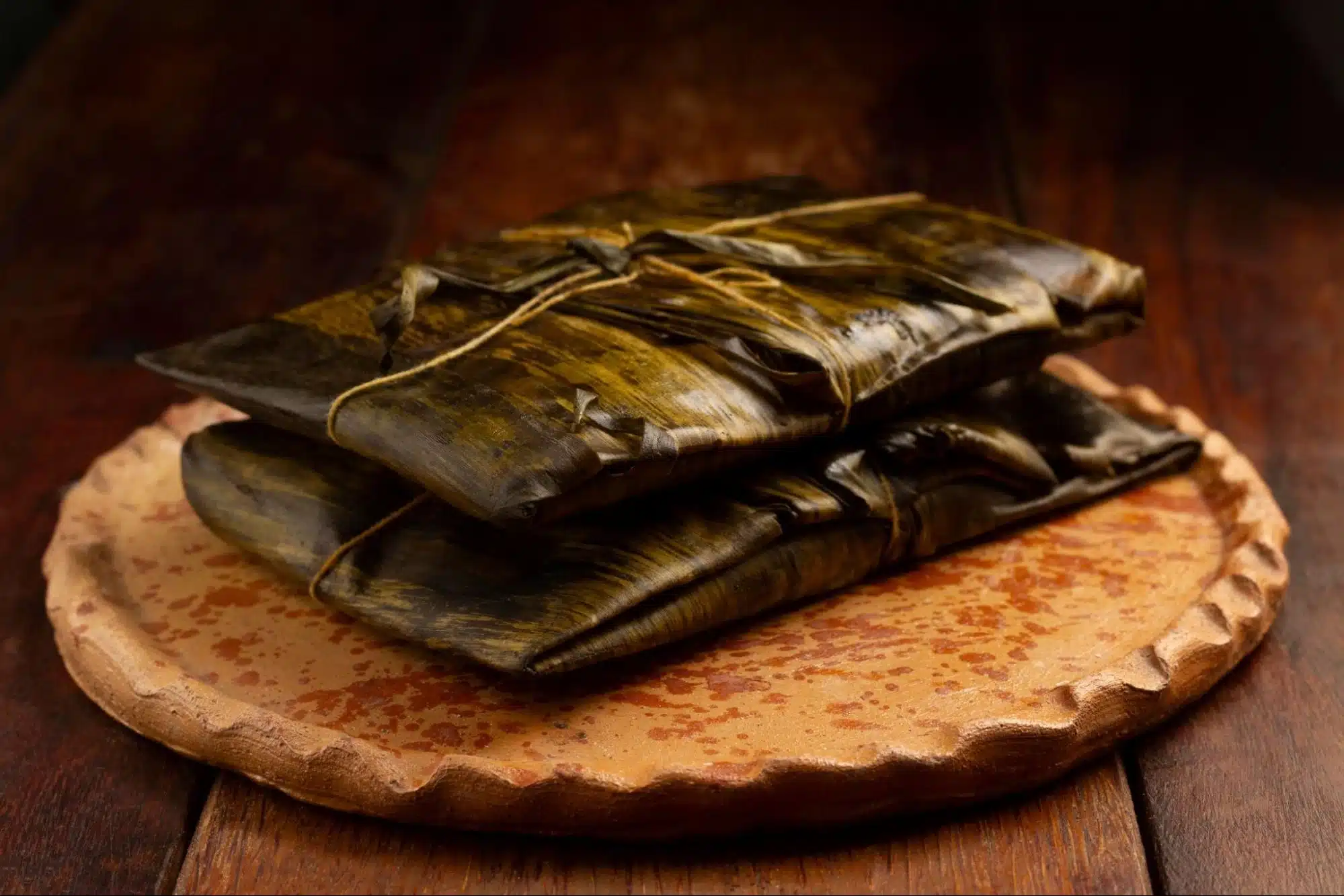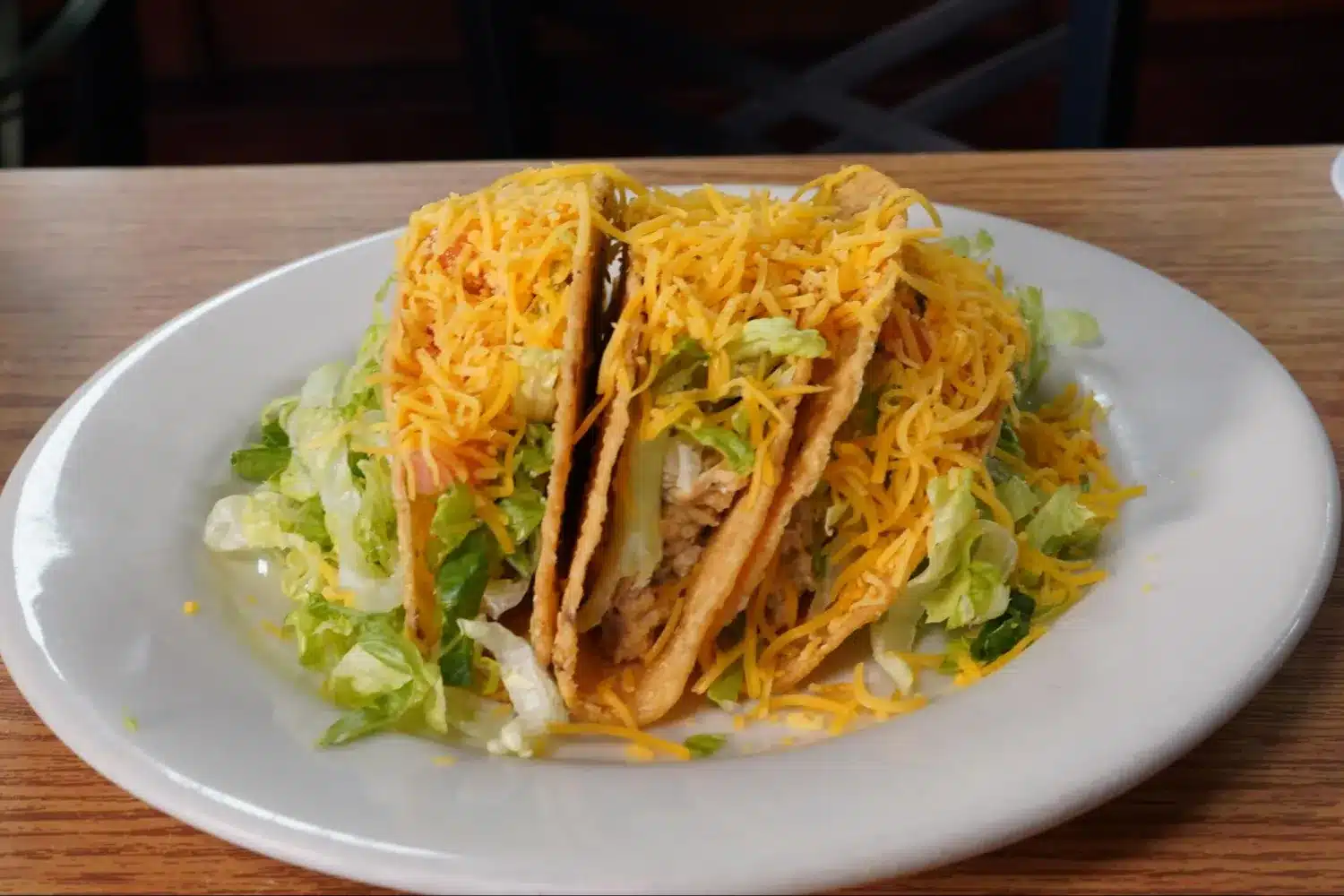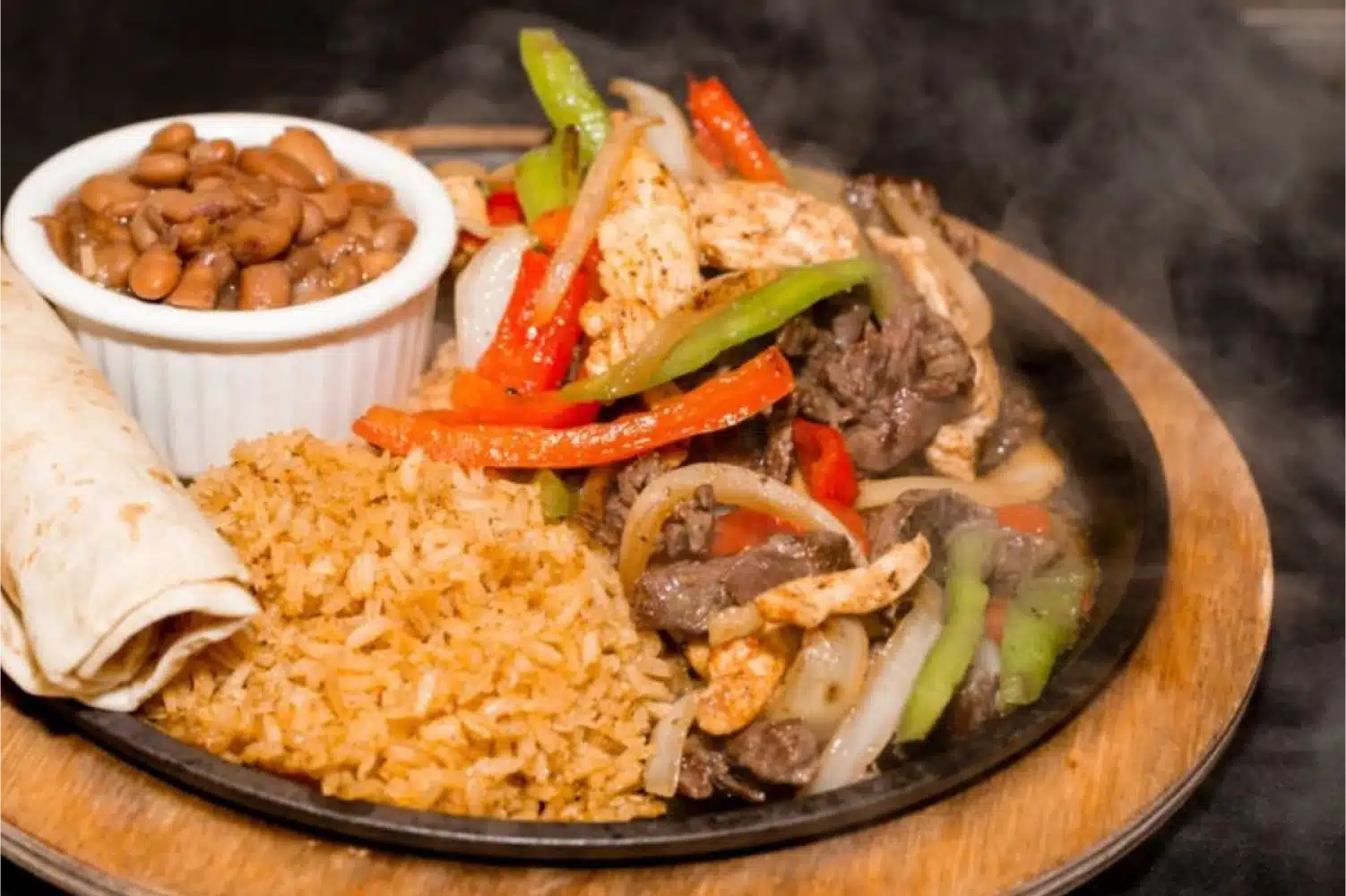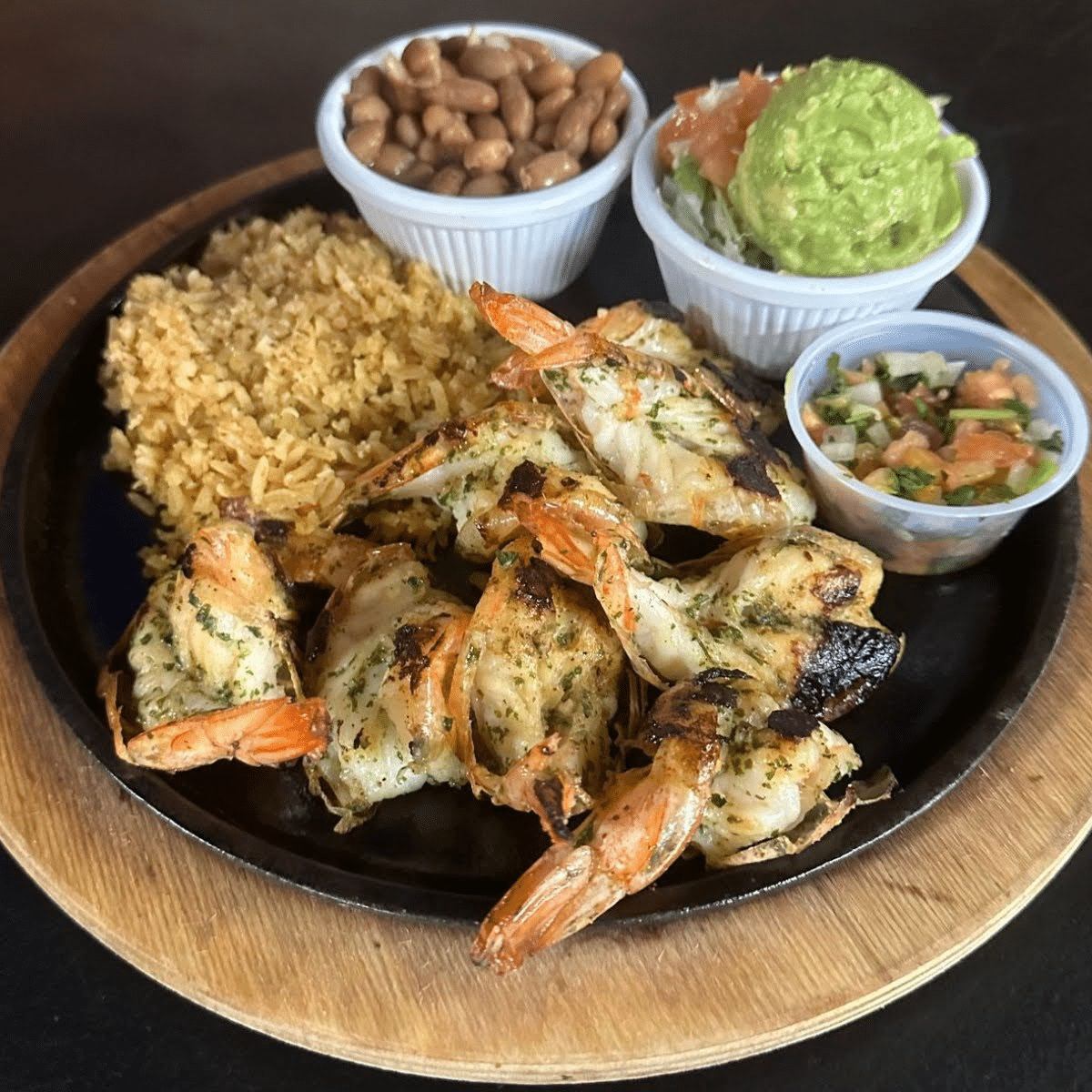Tamales are a festive symbol, often at the heart of Christmas celebrations and family gatherings, embodying traditions that have been passed down through generations.
Wrapped in tradition and soaked in history, tamales have journeyed through millennia, evolving into one of the most symbolic dishes of Central American and, more broadly, Latin American cuisine. This simple yet versatile dish, made of cornmeal dough and filled with anything from chicken to beef, pork, beans, or even sweet fillings, then wrapped in corn husks or banana leaves, has been a staple from the ancient Mayan and Aztec civilizations to the bustling streets of modern Mexico and beyond.
Ventura’s Tamales invites you on a savory journey to unwrap the full history of tamales, from their origins in Mesoamerica, where they were more than just food but a part of rituals and ceremonies, to their place at today’s dinner tables and occasions around the world. Through understanding the history of tamales, we can better appreciate the cultural importance of this traditional food, making every bite a taste of history.
Understanding the History of Tamales
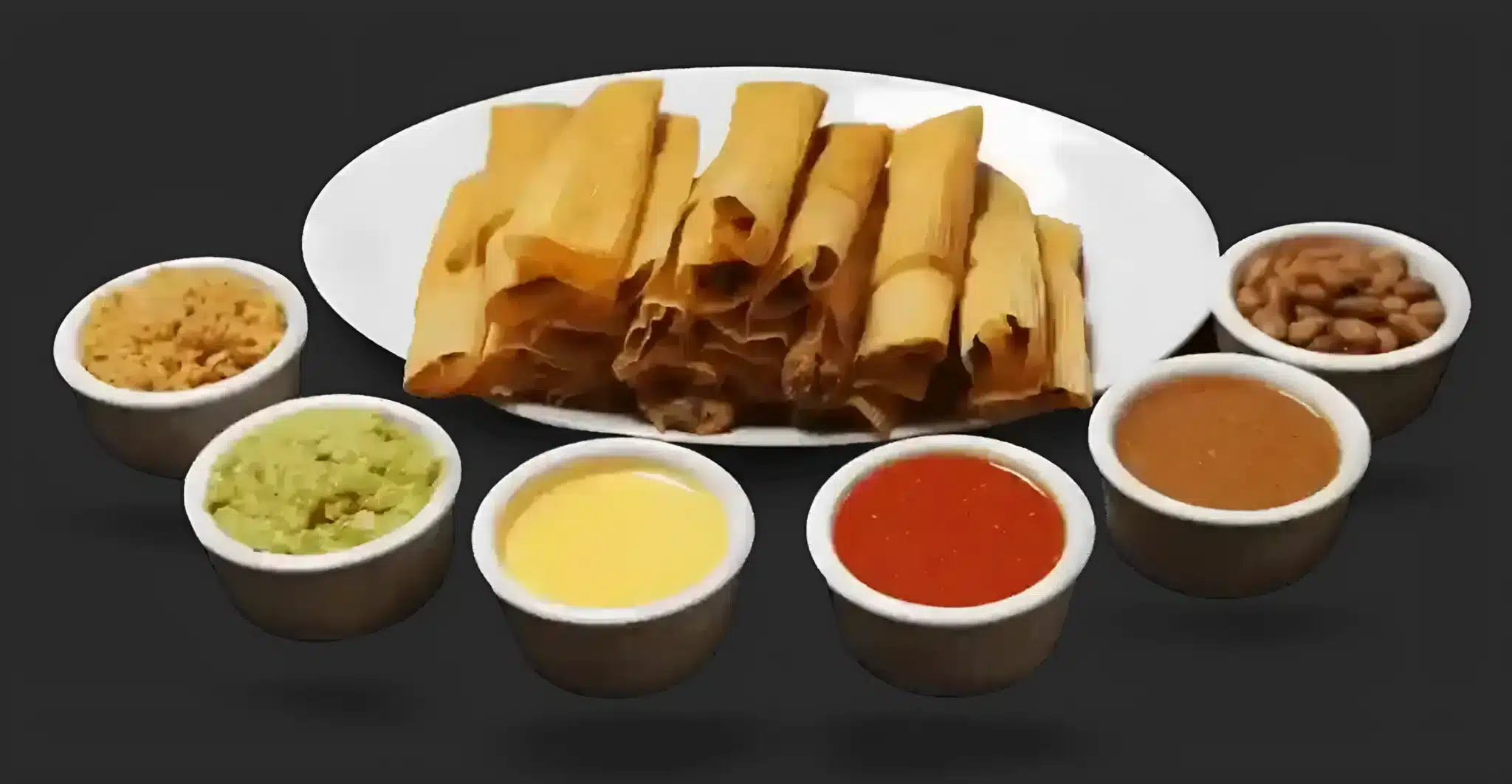
Historical Significance
Tamales have a profound historical significance, tracing back to as early as 8000 to 5000 BC in Mesoamerica. These ancient foods were not only a source of nourishment but also played a crucial role in the social and religious practices of the Aztec and Maya civilizations, as well as the Olmec and Toltec before them. Tamales were used as portable food for warriors and hunters, underscoring their importance in sustaining armies and supporting long journeys. The integration of tamales into daily life and ceremonies speaks volumes about their cultural value.
Early Documentation and Myths
Artifacts such as hieroglyphics provide evidence of tamale-making practices. These ancient drawings often depict women preparing tamales, which highlights the role of women in their cultural traditions. Moreover, legends surrounding tamales add a layer of mystery to their history. For instance, the Aztecs held beliefs that tamales were created from the flesh of gods, indicating the sacred status of this food within their culture. This mythological aspect, coupled with the practical utility of tamales, illustrates their dual significance in both the mundane and realms of ancient societies
Development Through Centuries
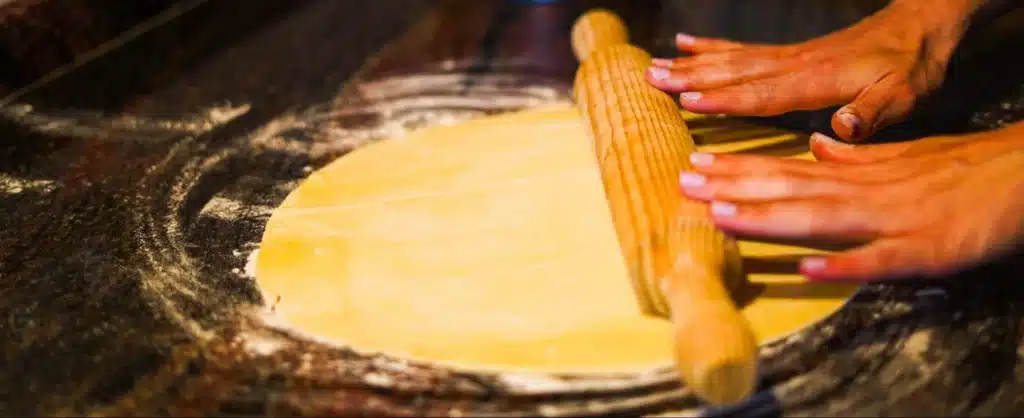
Changes from Pre-Columbian to Modern Times
The evolution of tamales from ancient times to the present day showcases changes in preparation, ingredients, and cultural significance. Initially, tamales served as a portable and sustainable food source for Aztec warriors, necessitating a method that could withstand long periods. They were originally cooked by burying in hot ashes, making them crispy and brown.
Over time, with influences from Spanish conquistadores, cooking techniques evolved to steaming in underground pits or pots.
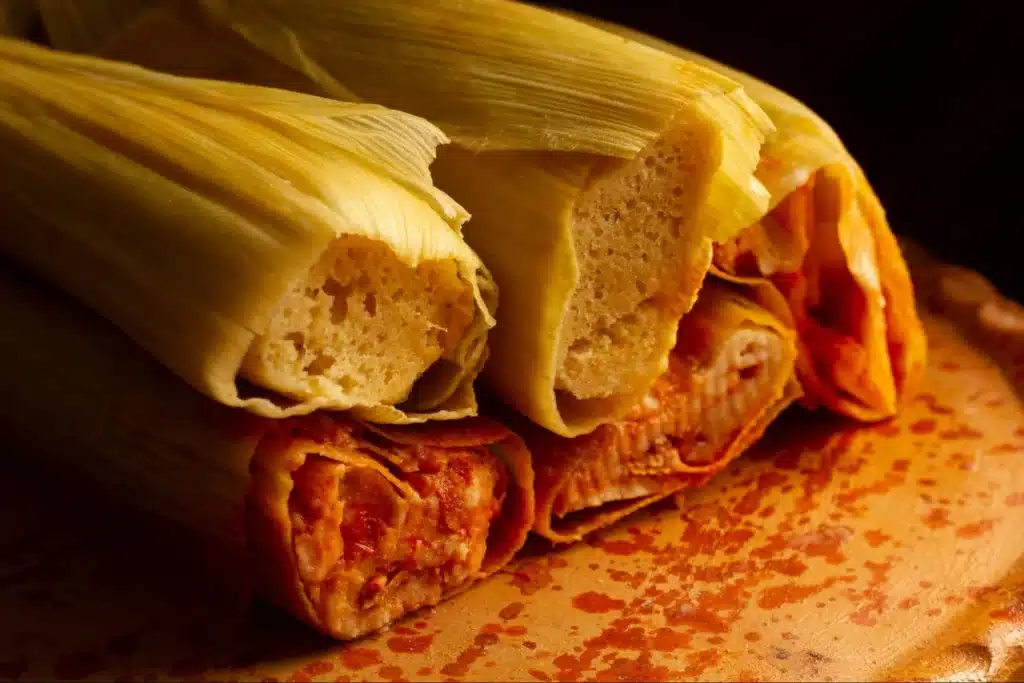
The transformation of tamales is also reflected in their physical attributes and ingredients. Depending on the region and available resources, tamales changed in size, color, shape, and filling. The wrappings varied widely, from traditional hoja de maiz to more innovative materials like soft tree bark and even fabric, adapting to the local flora and availability.
Influence of European and Other Cultures
The arrival of Europeans brought new ingredients and culinary techniques that were integrated into the existing tamale-making practices. This period marked a significant shift as the indigenous populations began incorporating meats like pork and beef, and ingredients like raisins and cinnamon, which were not native to the Americas.
As tamales spread through trade routes across the Americas, each region adapted the recipe to local tastes and ingredients, leading to a wide variety of tamales across Latin America. For instance, in Colombia, tamales are often larger and wrapped in plantain leaves, while in Guatemala, they feature vibrant colors and intricate designs.
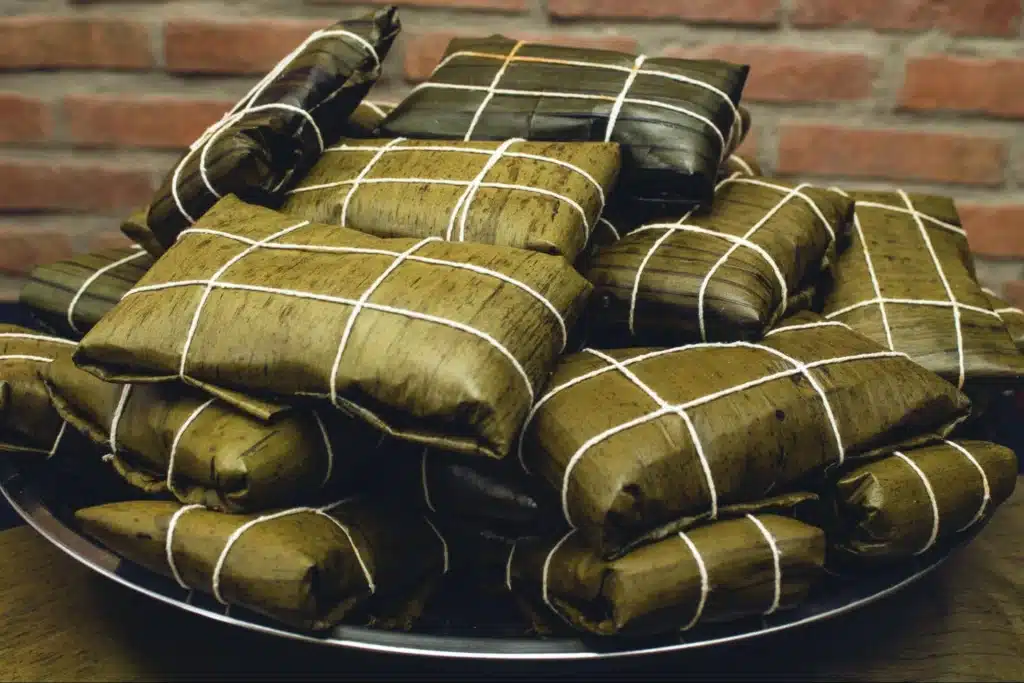
The global spread of tamales has led to their adaptation in various cultures around the world. In the Philippines, tamales are known as “binaki” and include local ingredients like coconut milk, while in Indonesia, a similar dish called “lemper” is popular. This adaptability of tamales not only highlights their universal appeal but also the ways in which different cultures have embraced and personalized this dish.
Through centuries, the development of tamales has been a testament to their resilience and capacity to adapt, reflecting the cultural exchanges and historical shifts that have shaped culinary practices globally.
Main Components of Tamales
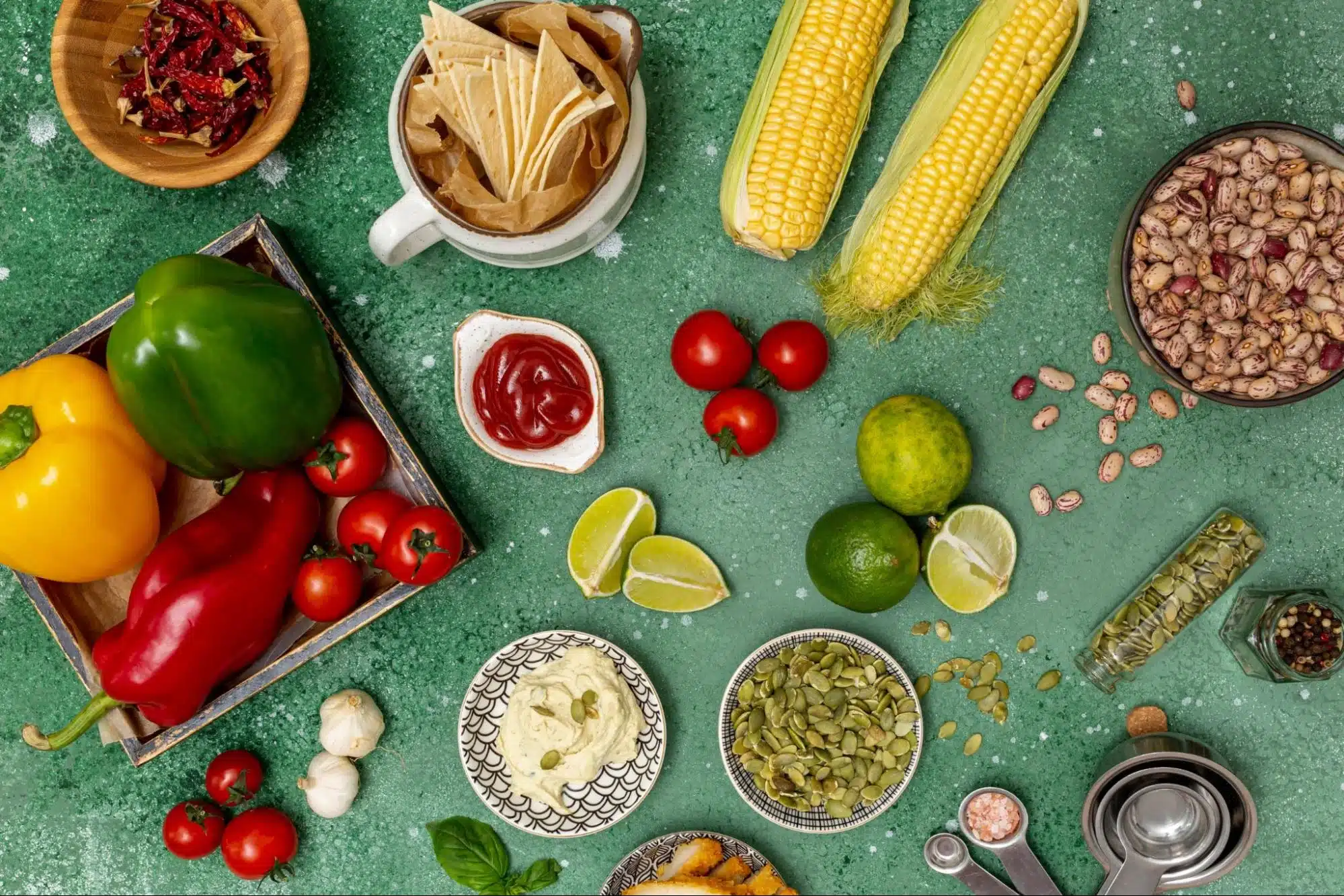
Importance of Masa
Masa, the foundational component of tamales, is essentially corn kernels soaked in calcium hydroxide and then pulverized into flour known as masa harina. This flour is integral to Mexican cuisine, particularly for making tamales. The quality of masa significantly affects the texture and flavor of the final product. For a masa to be effective, it must be moist and light, and its preparation involves careful proportioning and seasoning. Achieving the right consistency involves a “float” test where a small spoonful of dough is dropped into water and if it floats, the masa is ready, if not, it requires additional mixing and possibly more liquid or fat.
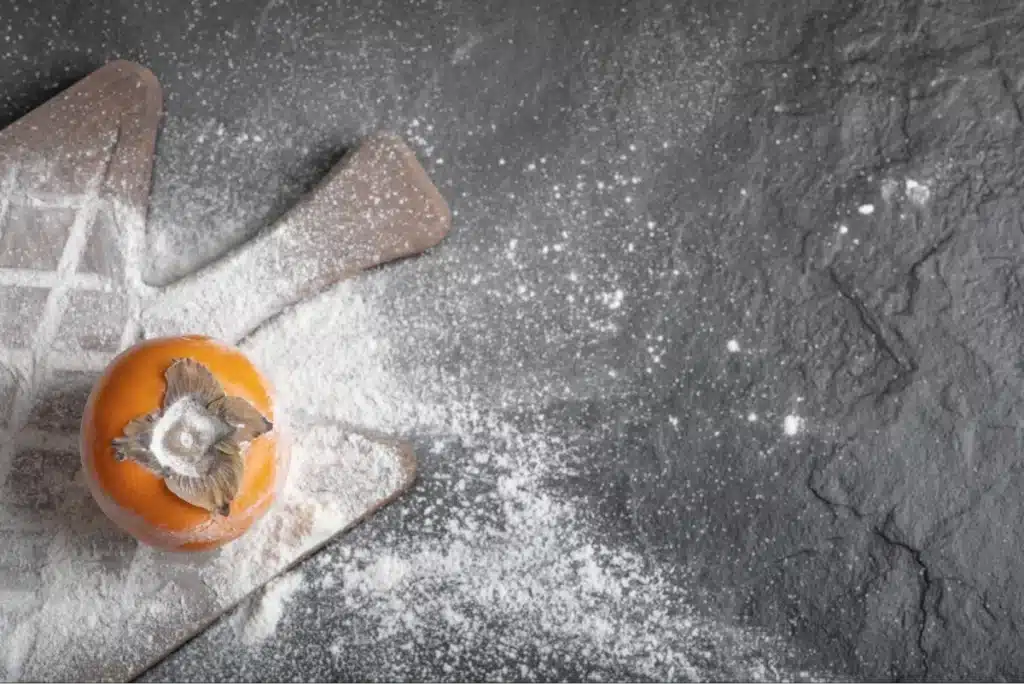
The traditional method of preparing masa involves whipping lard until it is light and airy, contributing to the sponge-like texture of the tamal. Alternatives such as vegetable shortening or even lard-free options are available, reflecting historical accuracy before the introduction of pigs to Mexico by Spaniards.
Typical Fillings and Wrappers
Tamales are versatile in their fillings, commonly including meats like chicken, pork, or beef, and are often enhanced with beans, cheese, or vegetables. The choice of filling is crucial as it needs to complement the masa and maintain moisture throughout cooking. The use of seasoned broths in the masa mixture helps to infuse flavor and maintain the right moisture level.
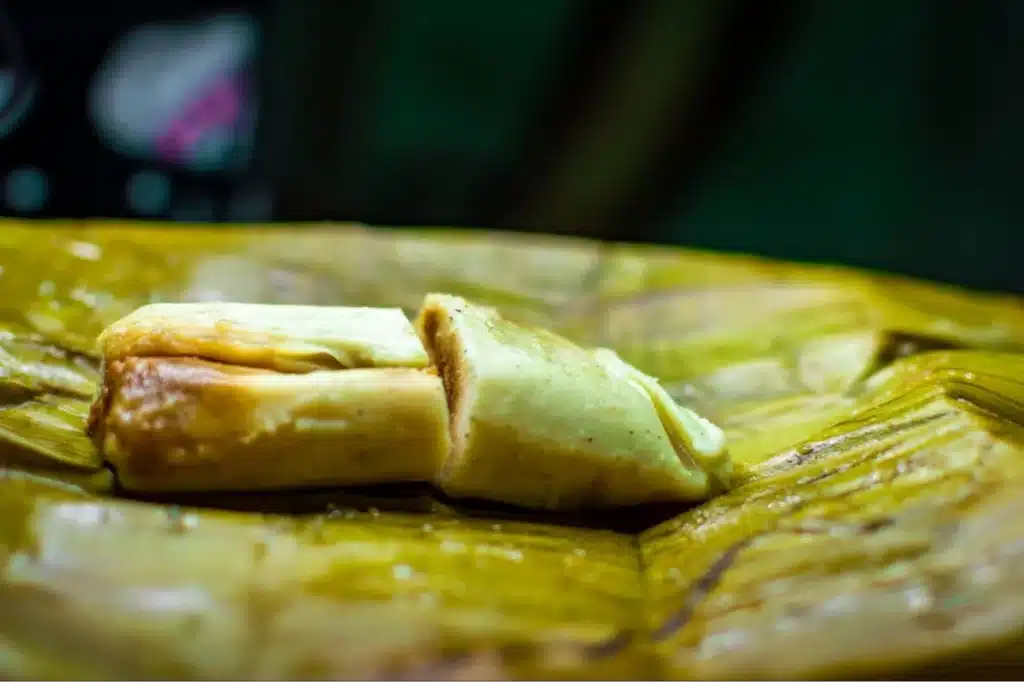
Wrapping is another critical component, traditionally done with corn husks, which are not consumed but serve to hold the filling and impart a subtle flavor during steaming. Alternatives like banana leaves are also used, especially in regions where they are more readily available. These leaves lend flavor and texture to the tamales, often resulting in a moister consistency. The choice of wrapper can influence the steaming process and the final taste of the tamale, with each type of leaf adding its character to the dish.
Tamales in Today's World
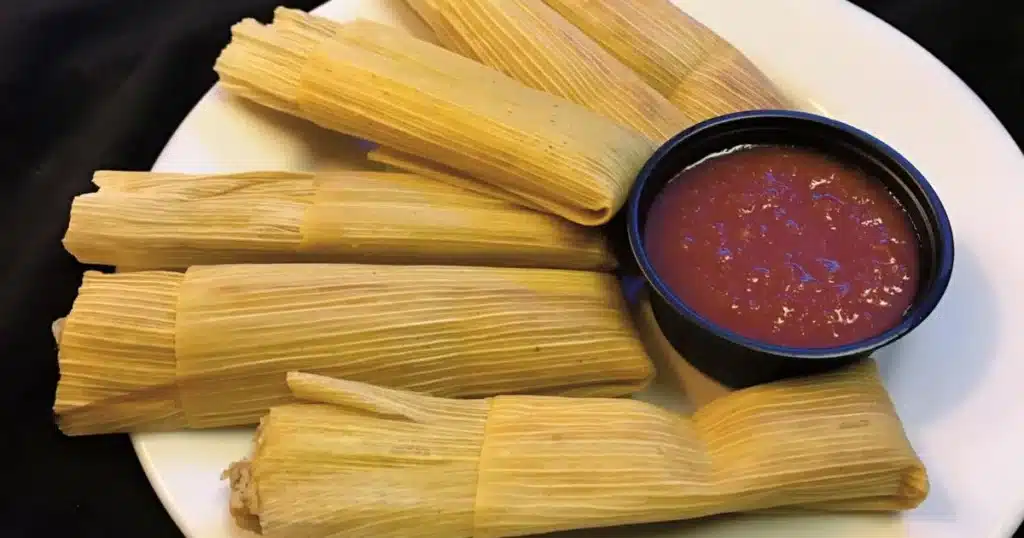
Current Cultural Practices
Tamales are still a part of festive traditions, particularly during significant celebrations like Christmas and New Year’s Day. The preparation of tamales is often a communal activity, known as a “Tamalada,” where family and friends gather to share in the labor-intensive process. This tradition not only facilitates the making of a lot of tamales, but also strengthens family bonds and community ties. The act of making tamales during Las Posadas, a pre-Christmas festival in Mexico, is a time-honored tradition, emphasizing the dish’s role in cultural heritage and family celebrations.
In contemporary settings, tamales are not just confined to holiday festivities but are enjoyed year-round. They are often served in various styles, from being smothered in chile sauce and cheese in restaurants to simpler, plain versions eaten right off their corn husk wrappers. The versatility and nutritional value of tamales, providing essential proteins, carbohydrates, and vitamins, contribute to their popularity.
Tamale Festivals and Special Occasions
Tamale festivals have become events that celebrate and showcase the diversity and culinary creativity of tamales. These festivals are not only culinary events but also cultural celebrations that feature live music, dance, and other forms of entertainment. For instance, the Hot Tamale Festival in Corpus Christi, TX and the Indio International Tamale Festival in Indio, CA are significant events that draw thousands of attendees, offering a wide array of tamales from traditional recipes to innovative creations like the “pizzatamal.”
These festivals often include competitions, such as tamale-eating contests and cook-offs, highlighting the best in tamale preparation. The festive joy at these gatherings underscore tamales’ role in cultural identity and pride. Tamales remain a cherished part of cultural traditions, celebrated in both everyday meals and grand festive occasions, continuing to bring people together over shared culinary heritage.
Conclusion
By diving into the origins, historical significance, and the diverse adaptations of tamales across cultures, we’ve seen how this versatile dish embodies the essence of tradition, family, and community. It’s clear that tamales are a vibrant expression of history and identity, passed down from generation to generation, celebrating the cultures that have nurtured and evolved them.
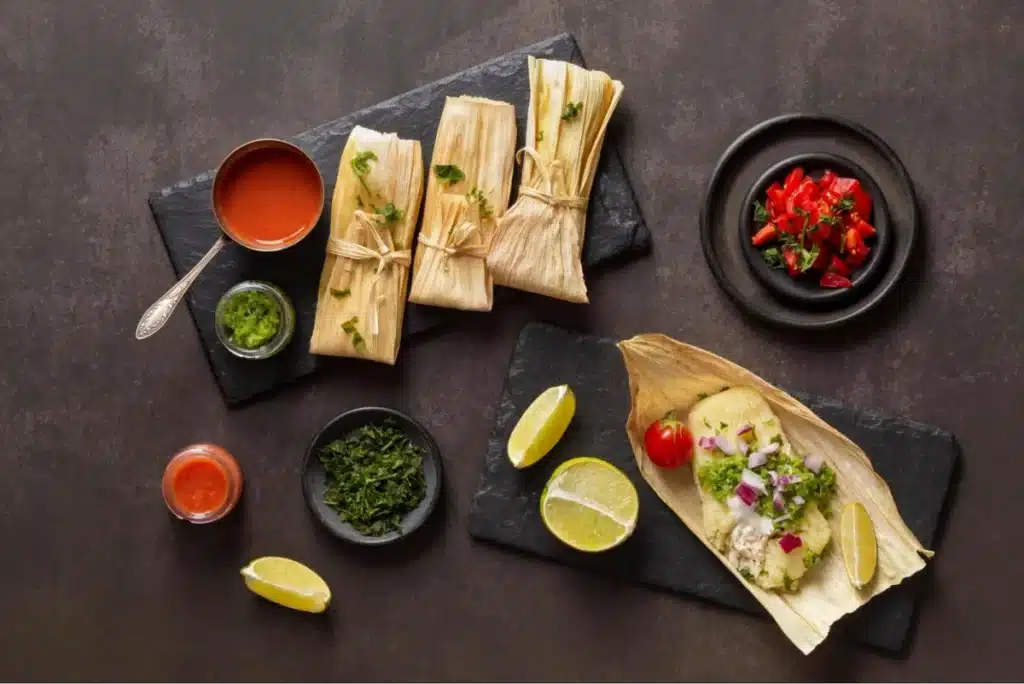
Tamales FAQs
What is the origin and history of tamales?
Tamales trace their origins back to Mesoamerica between 8000 and 5000 BC. They were first developed by indigenous cultures in Guatemala and Mexico, from where the preparation techniques spread throughout Latin America. Archaeological findings by Karl Taube, William Saturno, and David Stuart suggest that tamales could date back to around 100 AD.
What are bearded tamales?
Bearded tamales, or “tamales barbones,” are a variety from the coastal city of Escuinapa in Sinaloa. They are prepared with shrimp that includes the head and antennae, which protrude from the tamale, giving it a “bearded” appearance. This variety is distinct from “tamales tontos,” which are made from dough alone without any filling.
Why do tamales hold significant cultural value in Mexico?
Tamales are deeply embedded in Mexican tradition and are much more than just food. They represent a cultural event that brings families together, involving art, labor, and shared effort that strengthens family bonds. The making of tamales is a cherished annual event that unites multiple generations, making it a significant and joyous occasion.
How many different types of tamales exist?
There are over 500 different types of tamales found across Mexico, each region boasting its recipe. The base for these tamales is typically a corn-based dough, which is then filled with various ingredients and wrapped in leaves such as corn, banana, or maguey.



